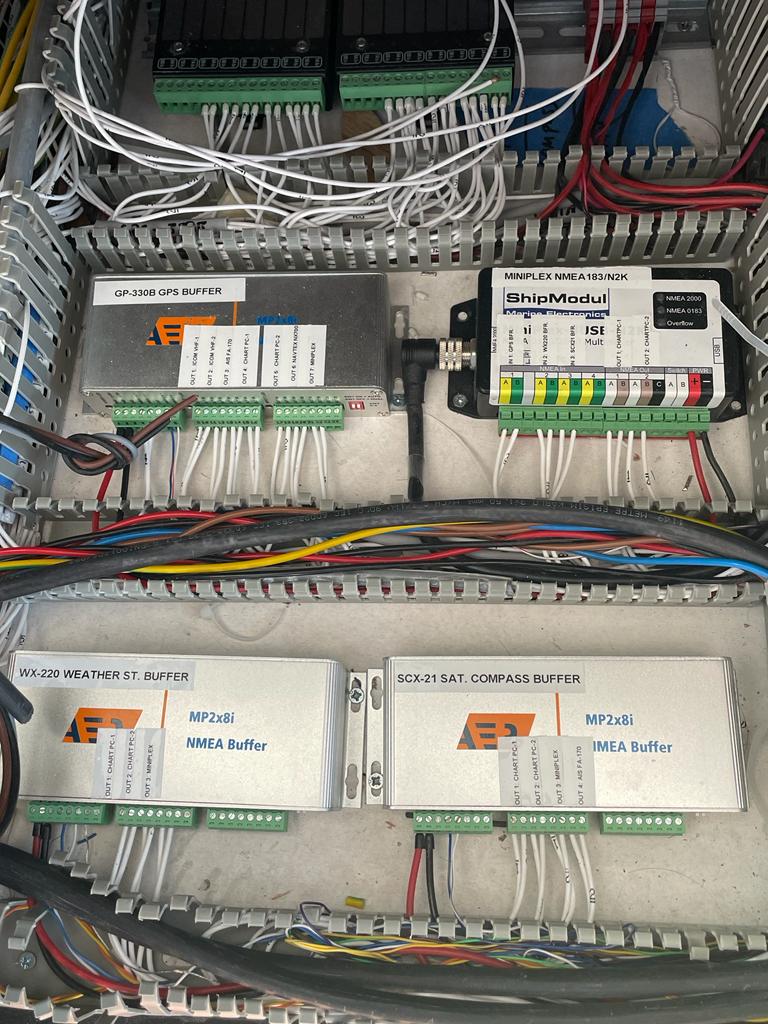Small Yacht Updates for Later Problem Fixes
- Chris Leigh-Jones
- Oct 20, 2023
- 3 min read
Updated: Oct 27, 2023
As an explorer yacht builder, one lesson that I've learned is that in high-latitude sailing, just like in life, it's the small things that often make the biggest difference. This reminds me of the time I was at the UK National Portrait Gallery, and I was captivated by a single silhouette of a young woman.
Today, we're going to explore one such detail - the helm station electronics. These intricate systems, much like the subtle hues in a painting, can make all the difference when navigating the high seas.
Ready for this exciting voyage? Let's go!
If humankind has a common failure, it may be that we do not appreciate what we look at. I once toured the UK National Portrait Gallery and was stopped by a single, rather ancient silhouette of a young woman on a turquoise background. Yes, it was a picture of a young woman, but it spoke to me of more than that, of the youth, her beauty, artistry of a long-forgotten human, their interaction, and on, all in perhaps twelve inches square. I learned from that experience to take time to examine what you are looking at.
Last week, I included some pictures in this blog, photos of the helm station electronics (Wire tray covers yet to be applied). I skipped through the items, ticking off the familiar. Then, later, I looked again with the reflection that if all this does not work as planned, I may be the one asked to fix it at some juncture.
What is a Buffer, and why is it needed?
So I looked at the four items in this picture, repeated above. On the face of it, they say Furuno, Weather Station, GPS, SatCom, and NMEA. But they are different from the instruments we bought, and I see few familiar NMEA 2000 or NMEA 0183 databus connections save for one of them. Time, perhaps, to educate myself.
Buffers are round things, sometimes considered as things that steam engines run up against. Not in this case. These devices propagate signals from single or duplicated instruments to various users, four channels to two users, or eight to one. They provide electrical isolation from each consumer, ensure signal integrity, and prevent the existence of potentially damaging circulating currents and similar. They can also switch input signals in the instance of a single failure.
Firstly, what signals are we dealing with here? We have mainly NMEA 0183 CAN protocol from the various Furuno navigation instruments. The odd one uses the more modern NMEA 2000 CAN Bus. (For the uninitiated, CAN is an automotive or industrial data transmission standard or Controlled Area Network. It allows devices to communicate with each other sans the presence of a host computer. Your car uses one, so they are pretty ubiquitous!)
Buffering instrument signals for multiple users
Our installer (not me!) selected commercial-grade buffers from AEP. The navigation instrument signal can be NMEA 2000 (CAN), NMEA 0183 (CAN), or RS422 (Ethernet).
Power and signals feed in on the left-hand block, and the users connect to the middle and right-hand blocks. See the diagram above. From the top left of the photo (GPS) buffer, output goes to two ICom VHF, AIS, 2 chart plotters (helm and flybridge), Navtex, and Miniplex (see below).
Converting between protocol
Moving on to the instrument on the top right, ShipModul. This device takes NMEA 2000 and 0183 signals in and sends them out again, buffered. So, in this case, it provides signals to the chart plotters and creates a data stream of NMEA 2000 PGN - Parameter Guidance Numbers for input elsewhere. Like the AEP buffers, it establishes an NMEA 2000 signal (see the out wire on the instrument's left in the helm photo). A useful additional feature is a wireless connection to a PC or similar to access the NMEA networks remotely within the vessel. It's our gateway into that system without a hardwired connection.
Wrap up
All this may appear a bit anal of me, and I'd agree it probably is my inner engineer not wanting to let go. Conversely, when the AIS stops working in a shipping lane, and the fog rolls in off the banks, you may be grateful for the understanding as you crouch under the helm chair, trying to trace the problem.
I hope you remained awake throughout the above missive. I did not inflict the pain on purpose; the buffers did it!
Chris Leigh-Jones



















Comments